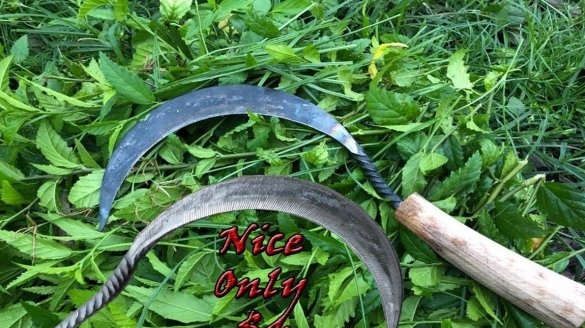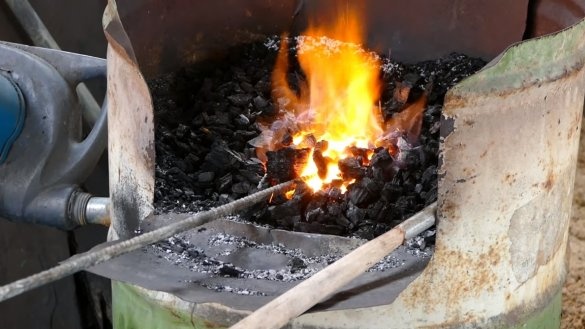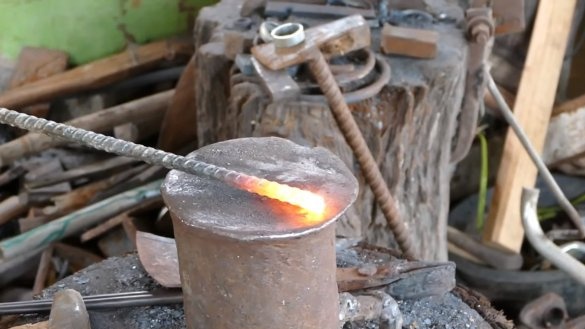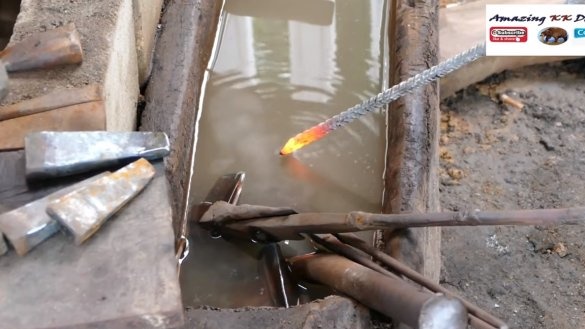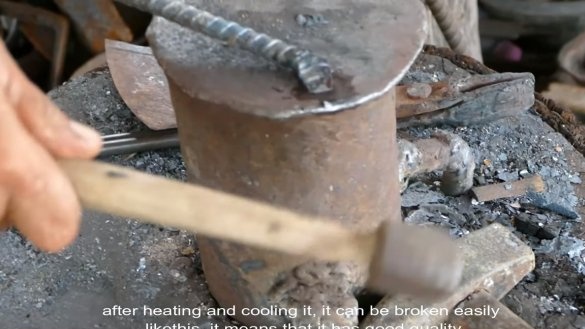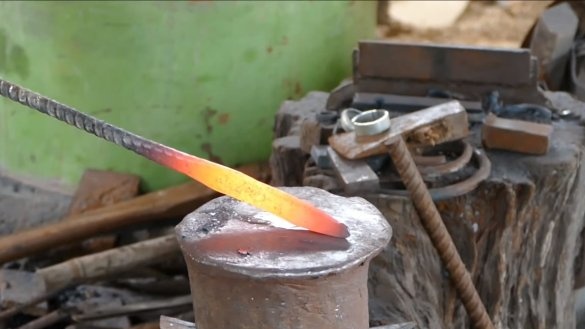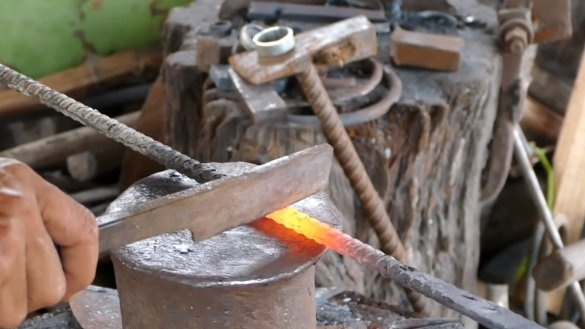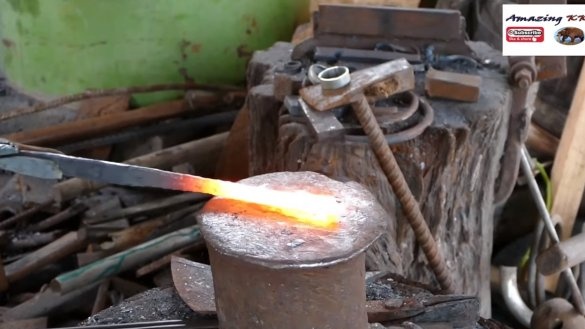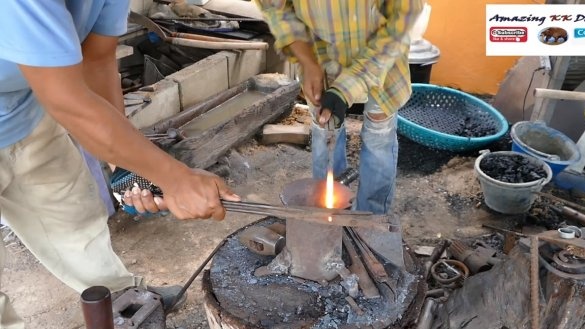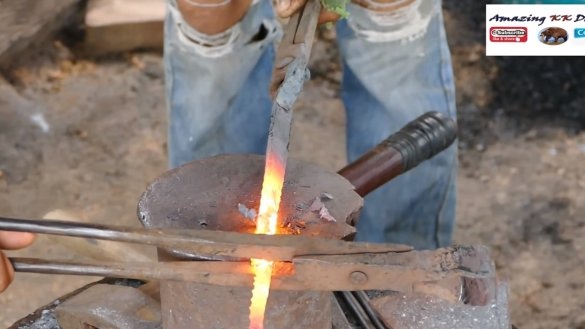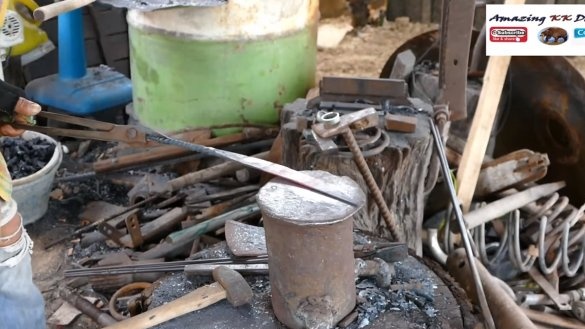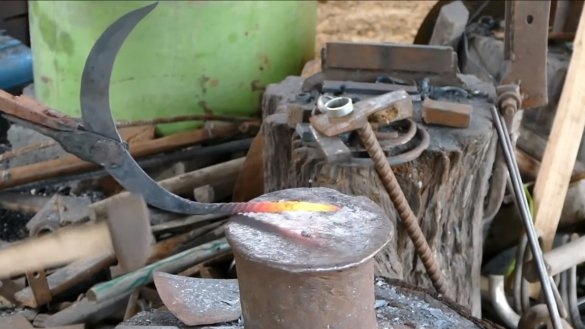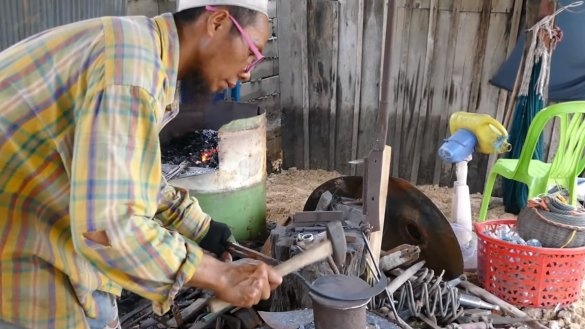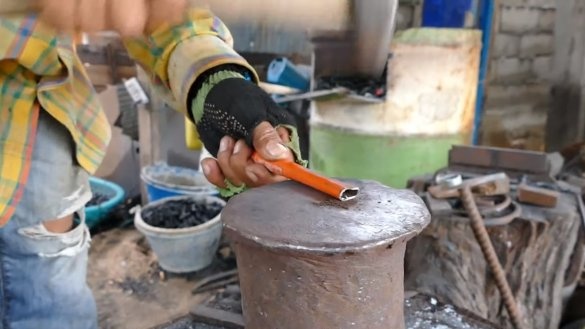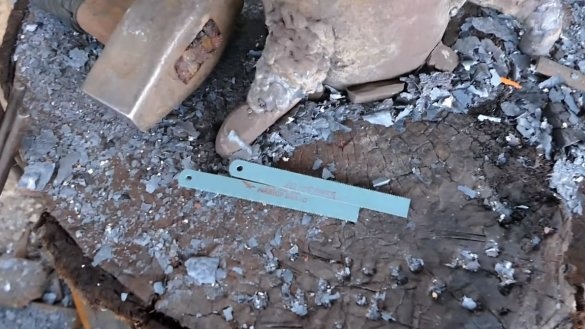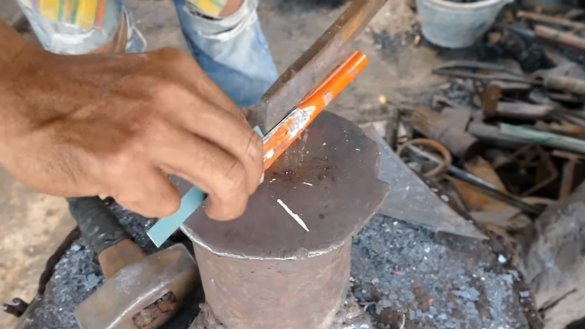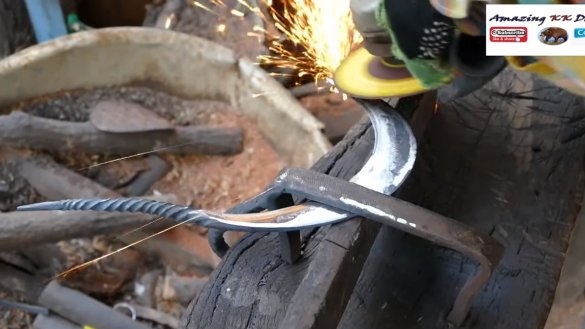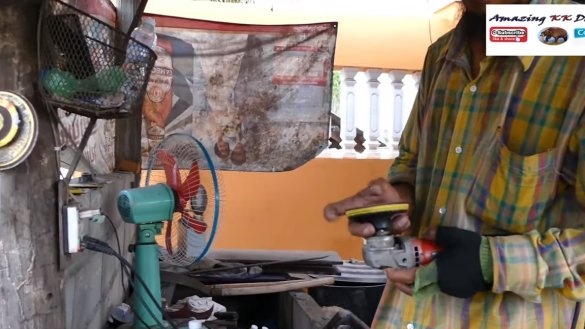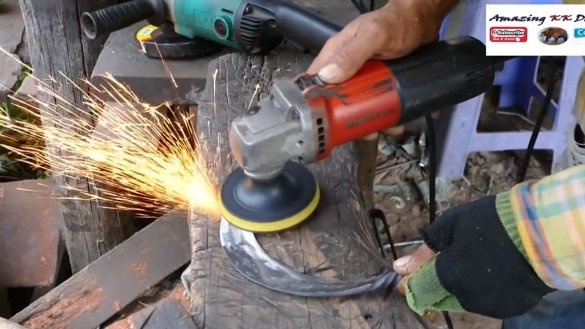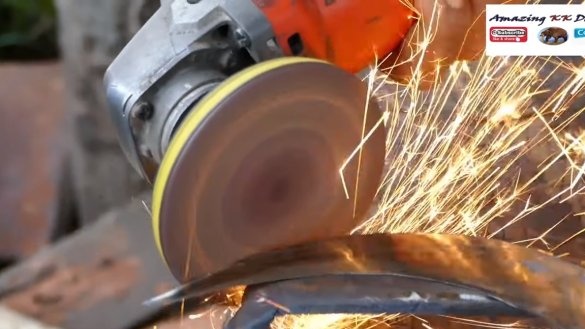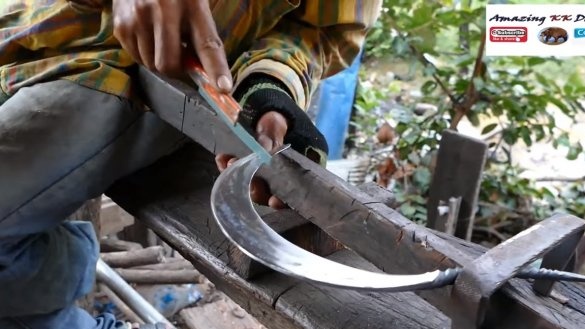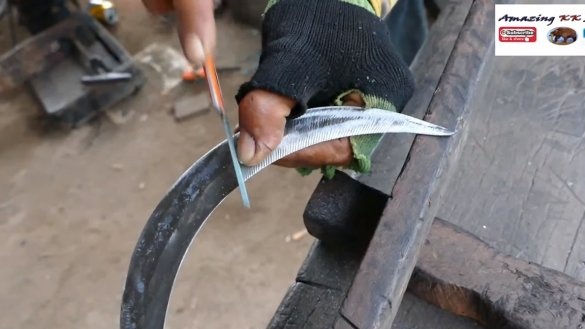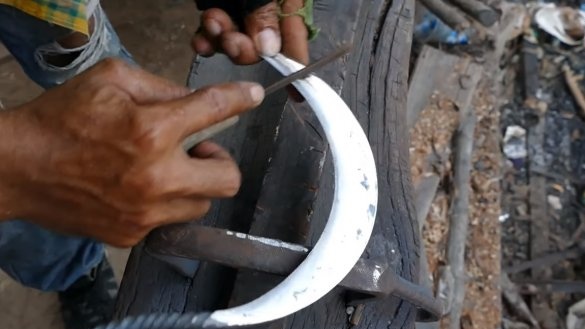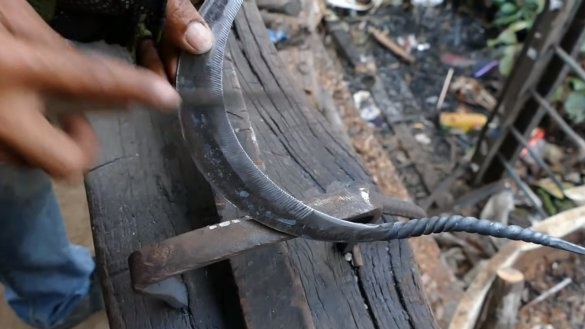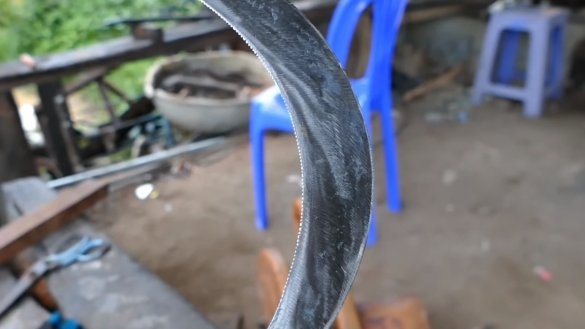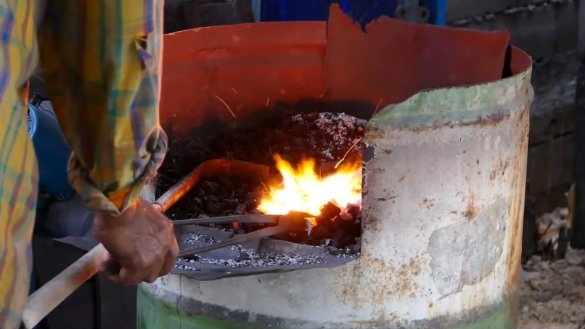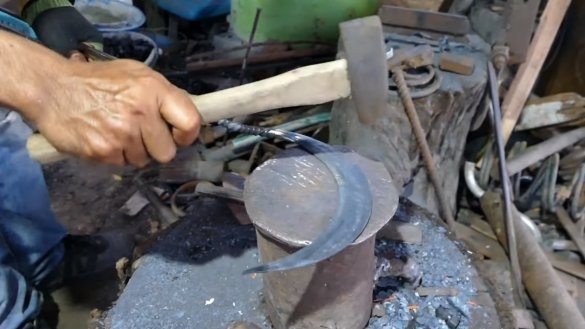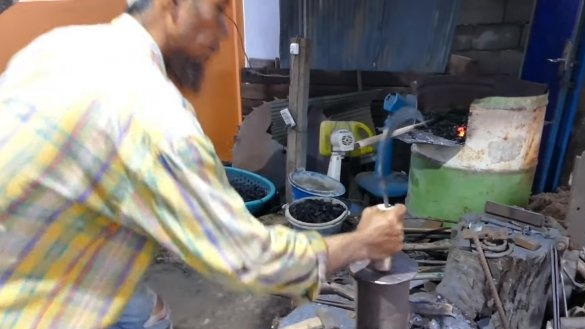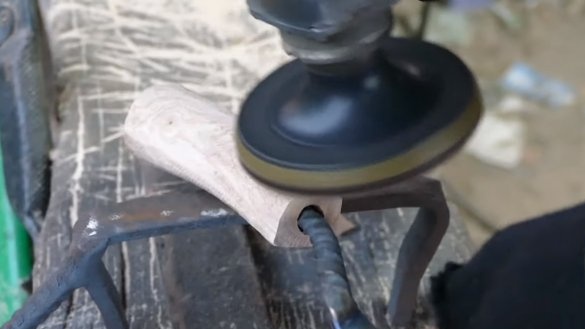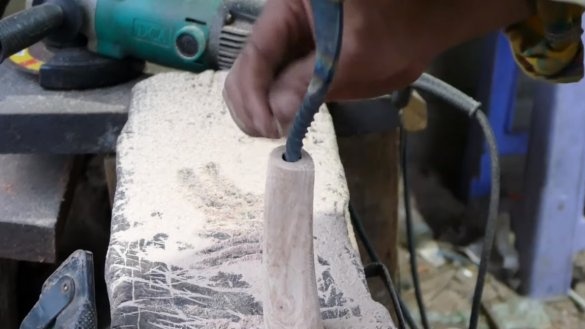Hello to all fans of craftsmen, today we will consider how, as an experiment, you can make a sickle by forging. Homemade made by craftsmen from Cambodia, everything was done practically on the knee with simple tools. The source of the material was the fittings, the homemade product looks interesting, and has shown itself to be excellent in business. At a minimum, having made one, you can gain experience and make a wonderful souvenir. If the project interests you, I propose to study it in more detail!
Materials and tools used by the author:
Material List:
- a piece of reinforcement;
- a piece of stick or bar for the handle;
- Super glue.
Tool List:
- grinder with different nozzles;
- oven, anvil, hammer;
- a hacksaw for metal or a blade from it;
- files.
Sickle making process:
Step one. Steel sample
First of all, the author decided to check out the steel, namely, to check it for hardening. The steel was heated to a yellow glow, and the author flattened the end of the fixture, and then lowered the hot metal into the water. As a result, the author managed to break off a piece of reinforcement after hammering by hammering, this indicates that steel is suitable for making a sickle, it can be hardened.
Step Two Forging a sickle
Then you can start forging, you need to knock with a hammer for a long time and not weakly, so it would be nice to find a partner. To begin with, the author decided to make a pen, he twisted the fittings, as a result, the pen acquired an interesting pattern.
Well, then we unfasten the reinforcement to the plate, slowly pull back and bend the sickle. At the end, it remains to bend the handle slightly so that the profile of the sickle takes on a finished look.
Step Three Clipping tool
There should be cloves on the sickle, we will need a special tool for cutting them. The author found pieces of an old canvas for metal and made a holder for the canvas from a piece of iron pipe. The hacksaw blade needs to be sharpened on a grindstone, in the end you get a tool for cutting cloves.
Step Four Grinding work
We proceed to grinding, here we need a grinder with a thick disk for grinding. Be sure to use the shield when working with thick discs, they when torn cause injuries incompatible with life!
For finer processing, the author installed a Velcro nozzle with sandpaper on the grinder. After thorough grinding, we trim the blade with a file.
Step Five Cloves
Cut into cloves, the author does it by eye. The teeth should be at an angle so that when the sickle moves toward itself, it cuts off the grass like a saw. To cut the cloves, the author used a tool from a hacksaw blade made earlier.
At the end, we pass along the blade of the sickle with a file, performing easy sharpening of the blade.
Step Six Quenching
The blade of the sickle must be hardened, otherwise the steel will not hold the sharpening. We heat the steel to a yellow glow, and then pour the blade from the bottle with a jet of water. After this procedure, the sickle is deformed, we will need to trim it with a hammer on the anvil without heating.
Seventh step. Handle and finishing touches
We make a handle for a sickle, for this you need a piece of a stick or bar. In order not to drill a hole, it can be burned with sharpened fittings or other object. Well, then we press the handle, the author poured sawdust into the formed cracks and filled everything with superglue.
The arms should be given the desired profile, for this we are working with a grinder with a nozzle for installing sandpaper.
Wood would also be good to soak in oil to protect it from moisture.
That's all, the sickle is ready, it remains to grind the blade. The author uses a file to sharpen the blade, but if the steel is too hard, then you can not do without grindstones. The sickle can be tested, the homemade work perfectly, and made almost of waste material.
I hope you enjoyed the project and found useful thoughts for yourself. Good luck and creative inspiration, if you decide to repeat this. Do not forget to share your ideas and homemade things with us!

